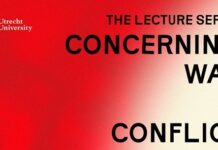Anis Germani
Mondoweiss / November 4, 2024
Israel’s unprecedented use of a massive number of bunker-buster bombs in Lebanon has raised concerns that it is using depleted uranium in its ongoing bombardment. We need an impartial investigation given the potentially disastrous consequences.
Following Israel’s violent bombing of the southern suburb of Beirut, the Syndicate of Chemists in Lebanon issued a statement on October 5 warning against Israel’s possible use of depleted uranium. The Syndicate cited the extensive urban destruction and the penetrative capacity of Israeli missiles, capable of burrowing through buildings and creating craters tens of meters deep as grounds for suspecting depleted uranium use.
The following day, the Lebanese Ministry of Public Health quickly warned against making assumptions without verified evidence, stating no solid proof had been collected so far. The Lebanese Atomic Energy Commission also urged caution, acknowledging the legitimacy of these concerns and planning field radiation surveys with the Lebanese army once security allowed. It was not until October 19 that the Atomic Energy Commission was able to extract two samples from the southern suburb of Beirut, one of them being from the site of the assassination of Hassan Nasrallah. Preliminary results were supposed to be announced on October 25, but to this day, no such announcement has been made.
The potential repercussions of depleted uranium (or DU) use for human health and the environment are so severe that any suspicion, however remote, must be thoroughly investigated. DU is typically suspected when bunker-buster or armour-piercing ammunition is deployed. Israel is particularly suspect given its historical record of using prohibited weapons — including during its current war on Lebanon — and its means to use DU. Although only a scientific investigation can conclusively confirm or refute Israel’s use of DU in Lebanon, how likely is it that Israel deployed DU in its recent attacks?
What is depleted uranium, and why is it dangerous?
Uranium is a rare, radioactive element found naturally in the crust of the earth requiring costly extraction. It consists of three isotopes (U-234, U-235, and U-238), only two of which are useful for producing nuclear energy and bombs. The third isotope, U-238, is unsuitable for nuclear fission, but because the former two are rare, raw uranium must be “enriched” by extracting these components, leaving U-238 as waste — uranium that has been depleted, or DU.
In the 1970s, DU properties were found useful for military use. Its high density (1.7 times that of lead) and low cost (since it is a byproduct of uranium enrichment) incentivized its use in tank armour and armour-piercing ammunition. Israel is thought to have tested DU on Egyptian forces during the 1973 October War, and the U.S. added it to its arsenal in 1977. DU rose to prominence in the military as well as public debates during the 1991 Gulf War and subsequent conflicts.
DU poses significant health and environmental risks. While not classified as a nuclear weapon, it emits alpha radiation, which can cause severe cancers, birth defects, and organ failure if ingested, inhaled, or embedded in the body through shrapnel. Radioactive particles from fired munitions disintegrate to dust on impact and contaminate the air, water, soil, and food chain, making radiation difficult to contain.
Small radioactive particles can be carried far from the battlefield. A 2006 study detected radioactive contamination in Europe following the use of DU in Iraq. DU has a half-life of 4.5 billion years, meaning its radioactivity persists indefinitely, making it a long-term environmental hazard.
Confirming Israel’s definitive use of DU in Lebanon can only be done through sample analysis. However, the likelihood of its use can still be gauged based on the strategies used by the anti-DU movement in the 1990s.
Israel’s arsenal
Assessing the likelihood of DU use starts by identifying the bombs deployed by Israel. This can be done through records of weapon shipments, images of bombs on fighter jets, and bomb patents.
The UN documented Israel’s use of GBU-31, GBU-32, and GBU-39 bunker-buster bombs in Gaza. In December 2023, the U.S. sent 100 BLU-109 warheads to Israel (having also sent DU munitions to Ukraine two months prior). Patents reveal that BLU-109 warheads are a component of GBU-31 bombs and can be made of DU or tungsten, the former being the cheaper option. An analysis of the footage of the F-15 jets that carried out the assassination of Hassan Nasrallah revealed they were carrying GBU-31 bombs.
During the 2003 Iraq invasion, the U.S. dropped a total of 24 GBU bombs alongside 440-2,200 tons of DU. On the other hand, Israel dropped around 80 GBU bombs in its operation targeting Nasrallah alone.
War correspondent Elijah Magnier argues that Israel does not need to use DU, given its use of advanced cluster and thermobaric bombs, which can cause equivalent destruction. The economic motivations are also not there since the U.S. and other Western countries are supplying it with ample funds and weapons.
During the 2003 Iraq invasion, the U.S. dropped a total of 24 GBU bombs alongside 440-2,200 tons of DU. On the other hand, Israel dropped around 80 GBU bombs in its operation targeting Nasrallah alone. This suggests an inverse relationship: as the use of modern bunker-buster bombs increases, the need for DU bombs to achieve similar outcomes decreases.
Israel’s history with DU
Israel was among the first to use DU in 1973 and its nuclear program is an open secret. It was also suspected of using DU in the 2006 Lebanon War, though the evidence is murky. In 2006, experts also raised alarms about the extent of the destruction — which couldn’t be attributed to other bombs at the time — and detected elevated radiation levels around two bomb craters, though these were never officially documented.
The former director of the Pentagon’s DU program, Dr. Doug Rokke, who was later accused of promoting conspiracy theories in an attempt to discredit him, stated that all the evidence needed to convict Israel was there: from the U.S. sending DU weapons to Israel at the outbreak of the 2006 war, to its documented use in a photo taken of Israeli soldiers on the Lebanese border loading DU shells into a tank.
In response, the UN Environment Programme analysed 32 samples from southern Lebanon and found no evidence of DU. However, Magnier argues that investigations into the use of prohibited weapons are often highly politicized, making it difficult to rely on these findings.
Iraq as a case study
Environmental expert and anti-DU activist, Dr. Rania Masri, stated that “in the case of Iraq, the challenge was not in confirming the use of DU in Iraq, but getting the U.S. administration to admit its catastrophic health and environmental impact.” Many U.S. veterans returned from Iraq with increased cancer rates and fathered children with birth defects, raising alarm bells about the long-term consequences of exposure to DU.
Studies confirmed that DU exposure increased miscarriage rates by 1.62 times and birth defects by 2.8 times among Iraq War veterans, with cancer cases in Iraq surging fivefold between 1990 and 2013. NATO attempted to dismiss these findings, attributing them to a psychiatric illness it dubbed “Gulf War Syndrome.” To this day, the NATO website states that “the scientific and medical research continues to disprove any link between Depleted Uranium and the reported negative health effects.”
Masri believes “it is not unlikely that Israel could have used DU weapons” since “its violations of international law and known possession of these weapons make it highly suspect.” Magnier agrees, citing Israel’s documented use of banned weapons such as white phosphorus and cluster bombs, adding that Israel’s army is “the least moral and most criminal army in the world. That is why we cannot disqualify its use of any banned weapon.”
The way forward
Radiation contamination is extremely challenging to contain as atomic particles can contaminate vast areas. Countries like the U.S. and U.K. have often shirked responsibility for cleaning up after using DU, as seen in Iraq and Afghanistan. The precedent set by these nations raises concerns about accountability and justice for affected populations.
After the first Gulf War, Kuwait pressured the U.S. to clean contaminated sites, eventually leading to partial cleanup efforts 13 years later; 6,700 tons of contaminated sand, 25 tanks, and 22 tons of DU munitions were buried in Idaho despite local opposition. Some contaminated tanks were deemed too costly to remove and were simply wrapped in plastic and buried in the Kuwaiti desert.
A thorough and impartial investigation in Lebanon seems unlikely, considering the complete exposure of state authorities to foreign influence. Even if positive results were found, Lebanon would face significant challenges, including taking legal action against Israel and organizing a costly radiation cleanup. Consequently, Lebanese state neglect and Israel’s lack of accountability may find “common ground” in sweeping the matter under the rug, leaving the Lebanese population to fend for itself against this silent killer.
Anis Germani is a medical doctor and a public health researcher; his work focuses on health systems, health economics, and equity












